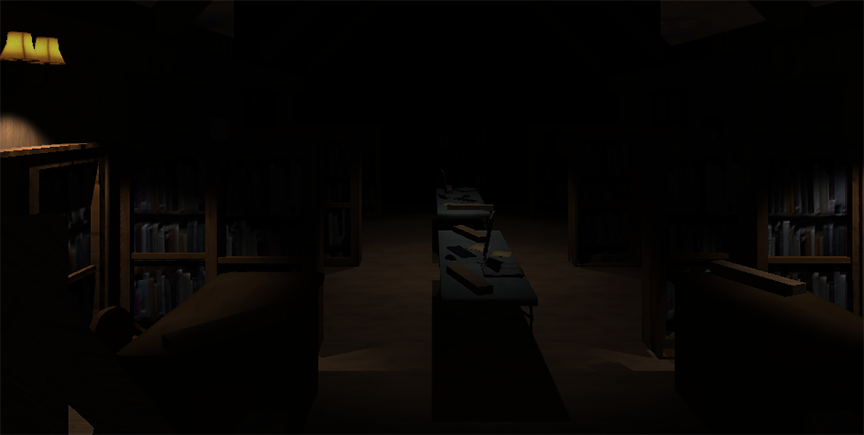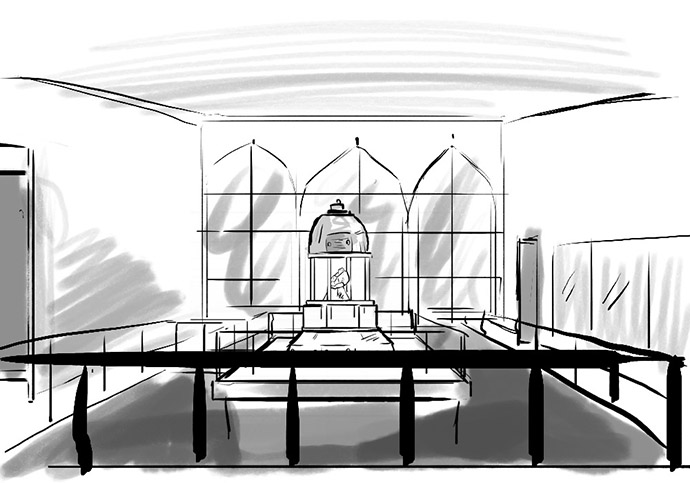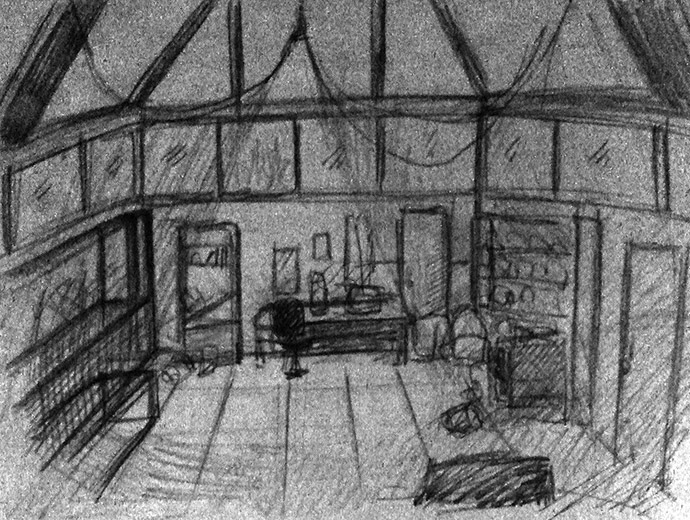Over the next several weeks, we’re spotlighting the top 20 3D Jam experiences chosen by the jury and community votes. These spotlights will focus on game design, interaction design, and the big ideas driving our community forward.
Ready to step into the darkness? In Dominic Ricci’s survival horror demo Observatorium, you’ve been sent to a strange building in the middle of the woods, ostensibly to retrieve something your friend left there. Observatorium is available for Mac and Windows from the 3D Jam site.
What was the ideation process behind Observatorium?
The process for Observatorium started with thinking about what game the motion controller would merge fluidly with. I thought about Nazi zombies, and how you had to board up windows by walking up to them and pressing a button. My thought was, well, what if you were actually picking up the planks used to board the windows? Would that immerse you more in the experience? Would it heighten the tension of time ticking down if you’re the one actually placing them to protect yourself? That was the core idea that everything started with, the idea of the windows.
Horror is a genre I particularly like designing for. I make games to evoke emotion, and I think horror games open the way to incredibly atmospheric and tension-filled experiences. Motion controllers, by virtue of their function, provide the player with a more immersive way to interact with what is happening in the game, and even more identify with the character. The combination of that and a horror atmosphere was something I felt would be something special, and result in a visceral experience on the part of the player.
What made the game come together was that every Leap Motion game that I saw and played with was a one-shot demo, or single mechanic experience. Nothing I played tried to convey a more traditional play experience, 3D or otherwise – instead it focused on the unique interface of the controller and centered around that. I wanted to implement all of those mechanics into a linear 3D campaign experience.
What was developing with Unity/C# and JavaScript like for a Leap Motion + Oculus mashup?
When I put together the team for Observatorium, I kept a few things in mind. I knew I wanted to have some sound work (Thomas Kelleher) and concept art (Zoe Serbin) on the side, but I wanted an engineer I could really work with on the Leap Motion controls, to help implement them and really fine tune them to feel as natural as possible.
For developers looking to pursue VR, Leap Motion, or both in the future, I can simply recommend working with at least one other person – someone to bounce ideas off of, and to give a different perspective on the programming and code. Leap Motion has what I consider to be a very good API built in for Unity3D, but without Chris Toczauer, my stellar engineer, the project wouldn’t have come close to the vision I initially had for it.
I would also advise being heavily educated with the engine itself, whether Unity, Unreal, or another, before jumping straight to alternate control schemes. It’s a lot easier to understand how the Leap Motion API fits into Unity if you understand Unity itself in the first place.
There were a few notable roadblocks during the development process, and a lot of them I still find pretty funny despite the headaches they gave us. We had a situation where the player would “trip” and fall down. When we tried to fix that by locking it in a particular axis, it just stayed at whatever level it was when it went upstairs. So, if you tried to go back down, you just floated at the level you went up to.
Unity itself proved challenging at points. Small things like objects being set to static caused us a brief setback, because we thought our whole pick up mechanic wasn’t working and we couldn’t figure out why. Of course, once that was unchecked then there was no problem, but it was concerning at the time.
The final “roadblock” I would mention was simply the scope of the game, mainly the 3D environment. A big part of why I make games is to emulate reality. That means I like 3D, and to a lesser extent, that means I prefer realistic environments. For a six-week project with no artists, that’s just a tad bit of an obstacle, but I wanted to get it done. I did, and at times it meant 60-hour weeks just on this project, but the end result was what I was aiming for, and I consider that roadblock overcome. That would be my main advice – if you have a roadblock, work through it as best you can.
As a writer, what are your thoughts on the intersection between fiction writing and game design?
It’s all about telling a story, or an experience; it’s just the tools that are different. There’s a fun story there – I decided to go into game design as a career when I was about 10. At the time, I identified the main parts of developing games, i.e. art, design, and engineering. I have always had magnificent abilities at drawing smiley faces, but sadly that’s where they end, and young as I was I wasn’t quite good enough to teach myself programming at the time. Not the genius.
Sooooooo… what is the least resource-intensive result? Design. Good writing and storytelling skills are integral to design, so I started writing in my free time. At the time I was doing some community management on Bungie.net, so I was fortunate enough to have a lot of feedback for my work. I was bad, very bad, but as I slowly got better with time, I eventually drew connections between writing stories and telling stories on their own.
By telling stories through film, video games, and art, I generally began to obtain a better understanding of what it meant to have a compelling narrative. I’m in games because I feel it’s the best way to tell a story, because life is interactive, and no other medium currently reflects that. The possibilities for VR tie into that as well, and I am excited to see where that goes in the future.
What’s next for Observatorium?
My team is satisfied with the results for Observatorium. Placing as a semi-finalist, even not in the top numbers, is a good accomplishment for us, and notably for me a drive to do better. I always measure myself against the best. (I’m looking at you, Aboard the Lookinglass!) Even with it being done during my responsibilities and crunch for school, I give myself no excuse for not performing better. I will continue to work hard and turn out better content in the future.
Due to various responsibilities, Observatorium will likely stay in its current state, but with the chance for us to revisit it later and improve it for the Leap Motion marketplace if time allows. VR is going to continue to present intriguing possibilities as it improves. A fellow classmate of mine at USC, Zachary Suite, recently made a VR experience where you sit in a wheelchair, and wheel yourself around through the game. That, to me, is something exceptional, and if not for Observatorium, I am nonetheless excited to see what we can do with it and Leap Motion in the future.



